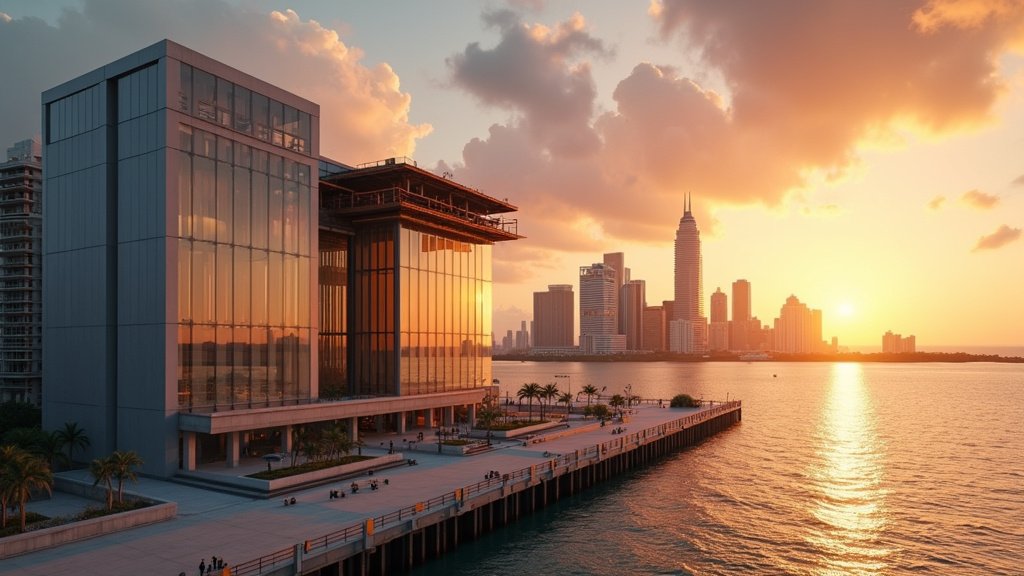Introduction: A New Era for Downtown Miami’s Arts Scene
The Miami City Council on Tuesday advanced a landmark initiative set to dramatically reshape the cultural and economic landscape of the city’s burgeoning downtown core. Council members yesterday approved the preliminary design concepts and allocated crucial funding for the ambitious proposed $300 million Downtown Arts & Music Hub project. This pivotal decision propels a long-envisioned plan closer to reality, promising a state-of-the-art multi-purpose venue designed to serve as a premier destination for entertainment and artistic expression. The project, slated for construction on strategically located city-owned land, represents a significant investment in Miami’s future as a global cultural hub.
Project Vision and Location
The proposed Downtown Arts & Music Hub is envisioned as a catalytic urban development project, designed to fill a critical gap in Miami’s existing venue infrastructure. Located on city-owned land immediately adjacent to the picturesque Maurice A. Ferré Park, the chosen site offers unparalleled accessibility and views of Biscayne Bay, positioning the venue as a central anchor within the downtown arts and entertainment district. The project’s scope extends beyond a single performance hall, aiming to create a dynamic hub that fosters artistic activity. Its primary function will be to attract top-tier musical acts, providing a necessary large-scale stage for international touring artists who often bypass Miami due to venue limitations. Equally important, the facility is planned to include flexible performance spaces specifically designed to support and showcase the vibrant talent of local Miami artists and cultural organizations, ranging from orchestras and dance troupes to theater productions and community events. The multi-purpose nature of the venue is central to its mission, ensuring it serves a broad spectrum of artistic disciplines and community needs, thereby maximizing its impact and utility year-round. Preliminary designs, now approved, detail initial concepts for the building’s architecture, capacity, and operational flow, setting the stage for more detailed planning phases.
Funding Structure: A Public-Private Collaboration
Funding for the estimated $300 million project is structured as a robust public-private partnership, reflecting a shared commitment from the city and private sector stakeholders. The financial framework includes a significant $100 million city bond issue, which was part of the funding allocation approved by the City Council yesterday. This municipal investment underscores the city’s dedication to the project’s realization and its recognition of the potential public benefits. The remaining and larger portion of the funding, a substantial $200 million, is slated to come from a public-private partnership led by VenueCorp Development Group. VenueCorp, a prominent entity known for its experience in developing and managing large-scale entertainment and cultural facilities, has been selected to spearhead the private sector’s contribution. This partnership model is intended to leverage the expertise and financial capacity of VenueCorp Development Group, mitigating some of the financial risk for the city while ensuring the project benefits from private sector efficiency and innovation in design and operation. The structure requires close collaboration between the city and VenueCorp Development Group throughout the development and construction phases.
Mayor Smith Hails Transformative Potential
Miami Mayor Smith has been a vocal proponent of the Downtown Arts & Music Hub project, emphasizing its potential to be a truly transformative force for the city. Following the City Council’s vote yesterday, Mayor Smith reiterated his strong support, hailing the project as a “transformative investment” that will yield significant returns for Miami. “This project is far more than just a building,” Mayor Smith stated. “It is a bold declaration of Miami’s commitment to arts and culture, a strategic move to strengthen our economy, and a vital step in realizing the full potential of our downtown waterfront. It will attract world-class talent, create jobs, and provide a much-needed platform for our incredible local artists. This is an investment in our cultural soul and our economic future.” His remarks highlight the dual objectives of the project: enhancing Miami’s reputation as a global cultural destination while simultaneously stimulating economic growth through construction jobs, tourism, and increased activity in the downtown area.
Broader Impact and Community Benefits
The development of the Downtown Arts & Music Hub is expected to have wide-ranging impacts extending beyond the walls of the venue itself. Economically, the $300 million investment is projected to generate substantial direct and indirect economic activity. The construction phase alone will create numerous jobs, and upon completion, the venue will require a significant workforce for operations, event management, security, and hospitality. Furthermore, attracting major touring acts will boost tourism, driving visitors to downtown hotels, restaurants, and retail establishments. Culturally, the hub is poised to elevate Miami’s profile on the international stage, making it a must-stop destination for global artists and tours. This increased visibility is likely to foster a more vibrant local music and arts scene, encouraging collaboration and providing inspiration for emerging artists. The inclusion of dedicated spaces for local artists is particularly significant, addressing a long-standing need for affordable and appropriate performance venues in the city. The project also aligns with broader urban development goals for downtown Miami, contributing to the area’s ongoing transformation into a lively, mixed-use urban center. Its location adjacent to Maurice A. Ferré Park ensures integration with existing public spaces and cultural institutions, creating a cohesive arts district.
Next Steps and Anticipated Timeline
With the preliminary design approved and funding allocated, the project now moves into subsequent phases of development. These will include detailed architectural and engineering design, securing necessary permits, and refining the operational plan for the venue. Community engagement and public input will likely play a role as designs are finalized. The public-private partnership with VenueCorp Development Group will be crucial during these stages, managing the complexities of large-scale construction and development. While challenges inherent in projects of this magnitude, such as potential construction delays or unforeseen costs, are always a possibility, the City Council’s decisive action yesterday signals strong momentum. The current timeline anticipates groundbreaking for the Downtown Arts & Music Hub project in late 2025. Completion dates will be clearer as the project progresses through its detailed design and permitting phases, but the initial steps taken yesterday represent a significant leap forward for Miami’s cultural ambitions.





